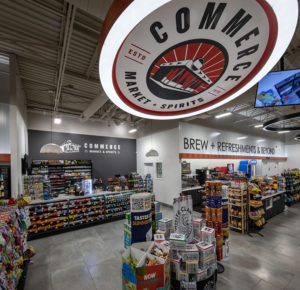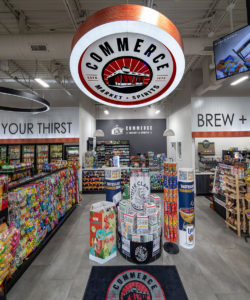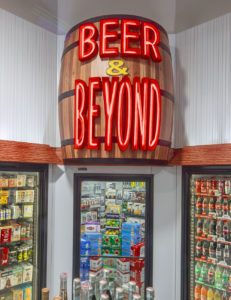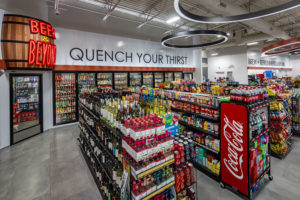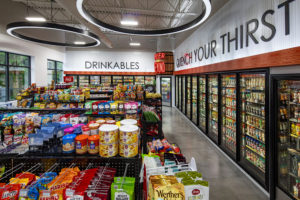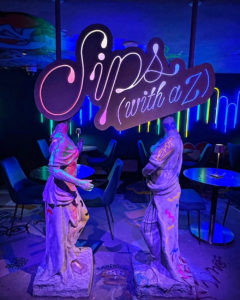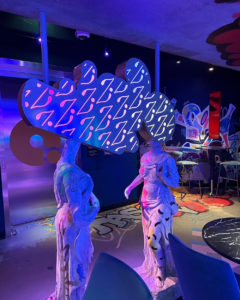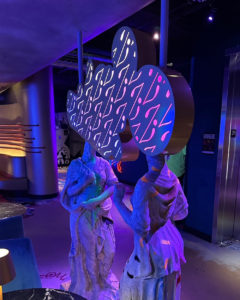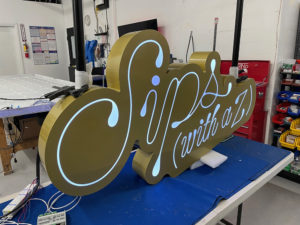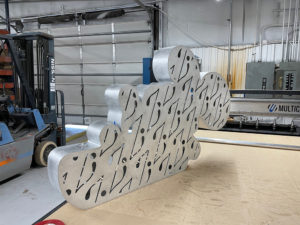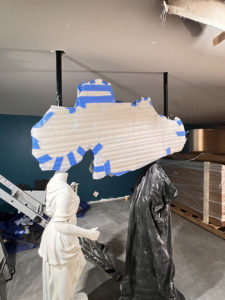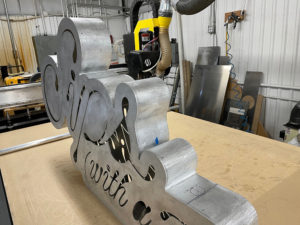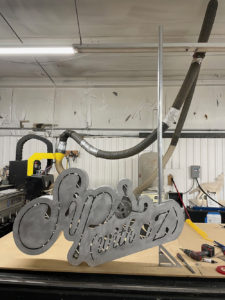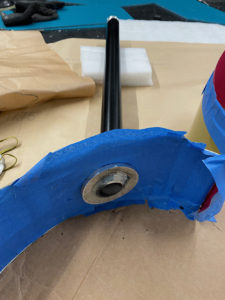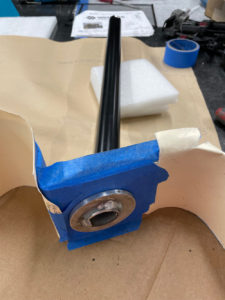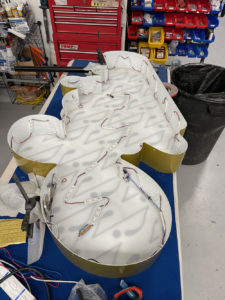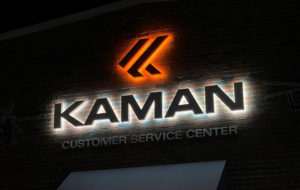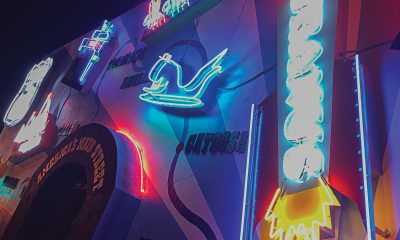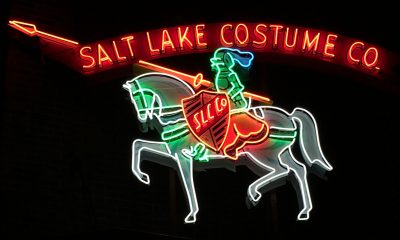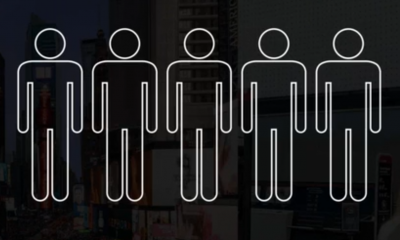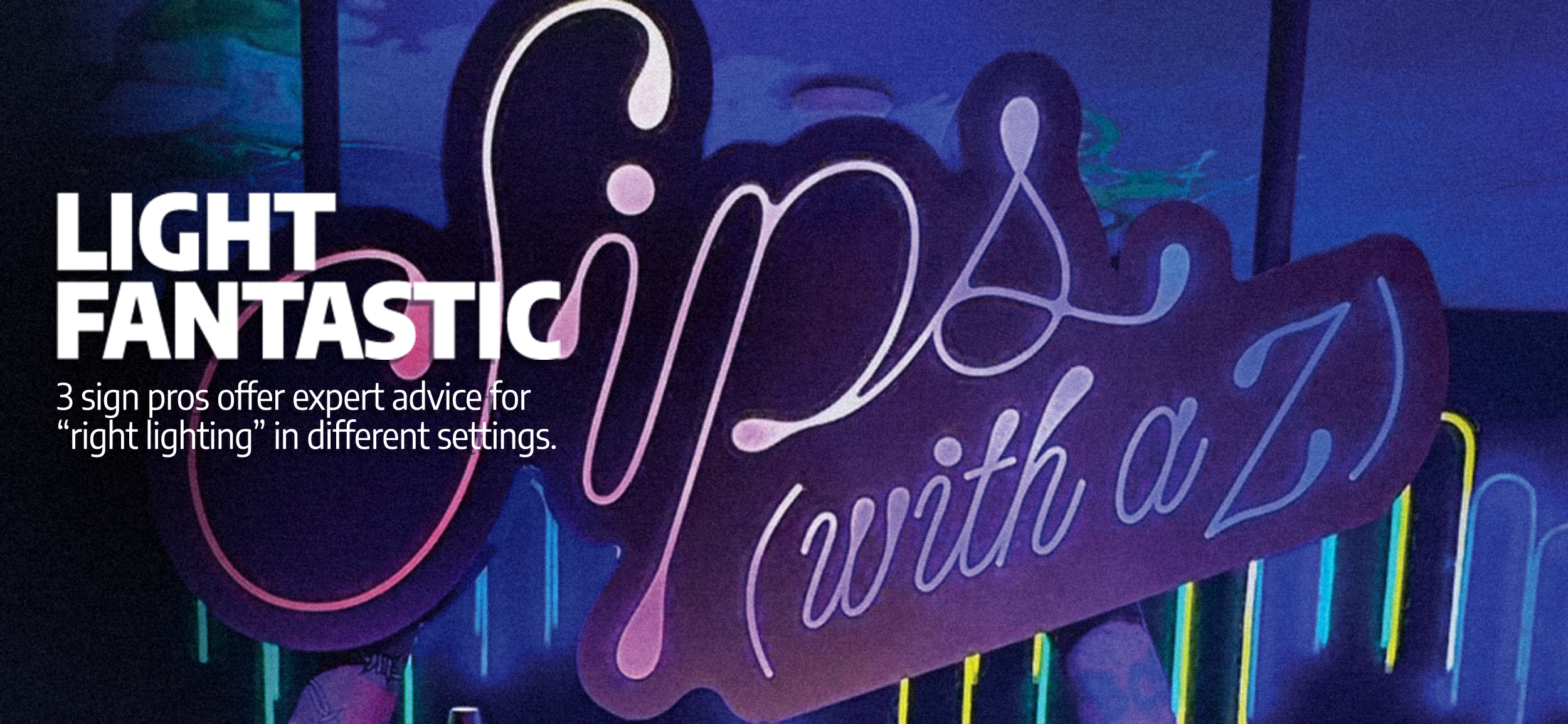
Right-Lighting 3 Varying LED Sign-Lighting Situations
Illuminating solutions for exteriors, and bright and dark interiors.
Published
2 months agoon
GETTING THE LIGHTING right for LED signs in different situations, be it an outdoor environment or an indoor setting such as a brightly lit convenience store or a darker, more intimate bar and restaurant, can be problematic. How do you address interior lighting needs when small signs and several TV screens are vying for competition? What happens when the seasons change and lighting is either brighter or more muted? It takes experts who can set an LED sign to the correct various levels of brightness.
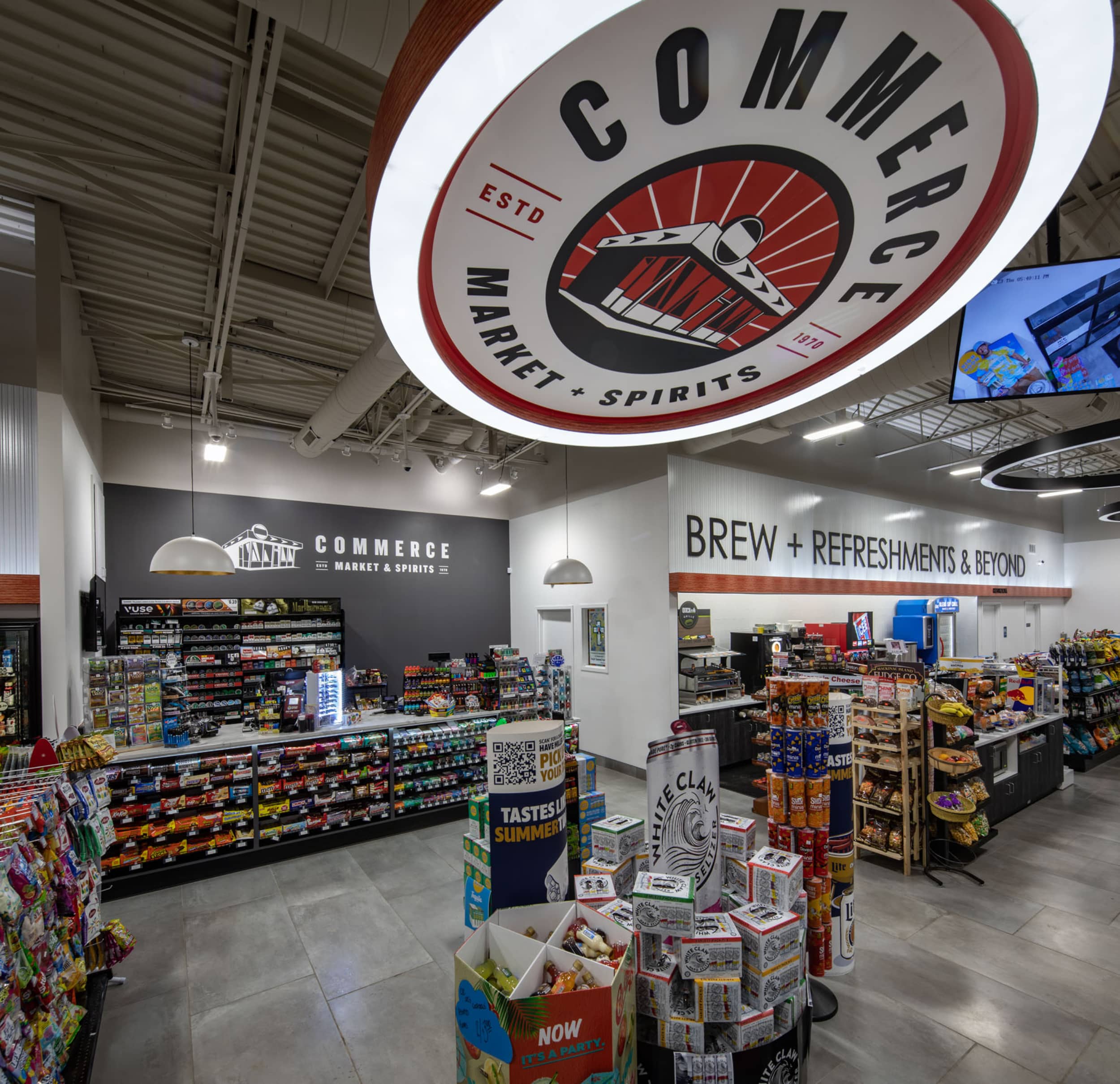
BRIGHT C-STORES
“At our company, we’re seeing an increase in this type of work,” says Michael Benincasa, vice president of retail design and strategy at FH Studio Design Group (Rochester Hills, MI), a division of Federal Heath (Hurst, TX), which fabricates the elements and parts. “Convenience stores are starting to catch up to major retailers that have been adequately lighting their stores for years. Typically, convenience stores just offered ambient lighting and that was it. Now it can be a large chain store to a smaller mom-and-pop facility that are investing in their businesses with better LED sign lighting and seeing a positive return.”
When sign manufacturers like FH Studio visit clients, they like to hire outside lighting designers who bring along facts and data to prove that sales go up when a store is properly lit. “We’ll do site visits with the lighting designer who will bring their gauge with them so if the customer likes that lighting level, our designer will know exactly what the footcandles are or the temperature of the lights, and that’s important input for us,” Benincasa says.
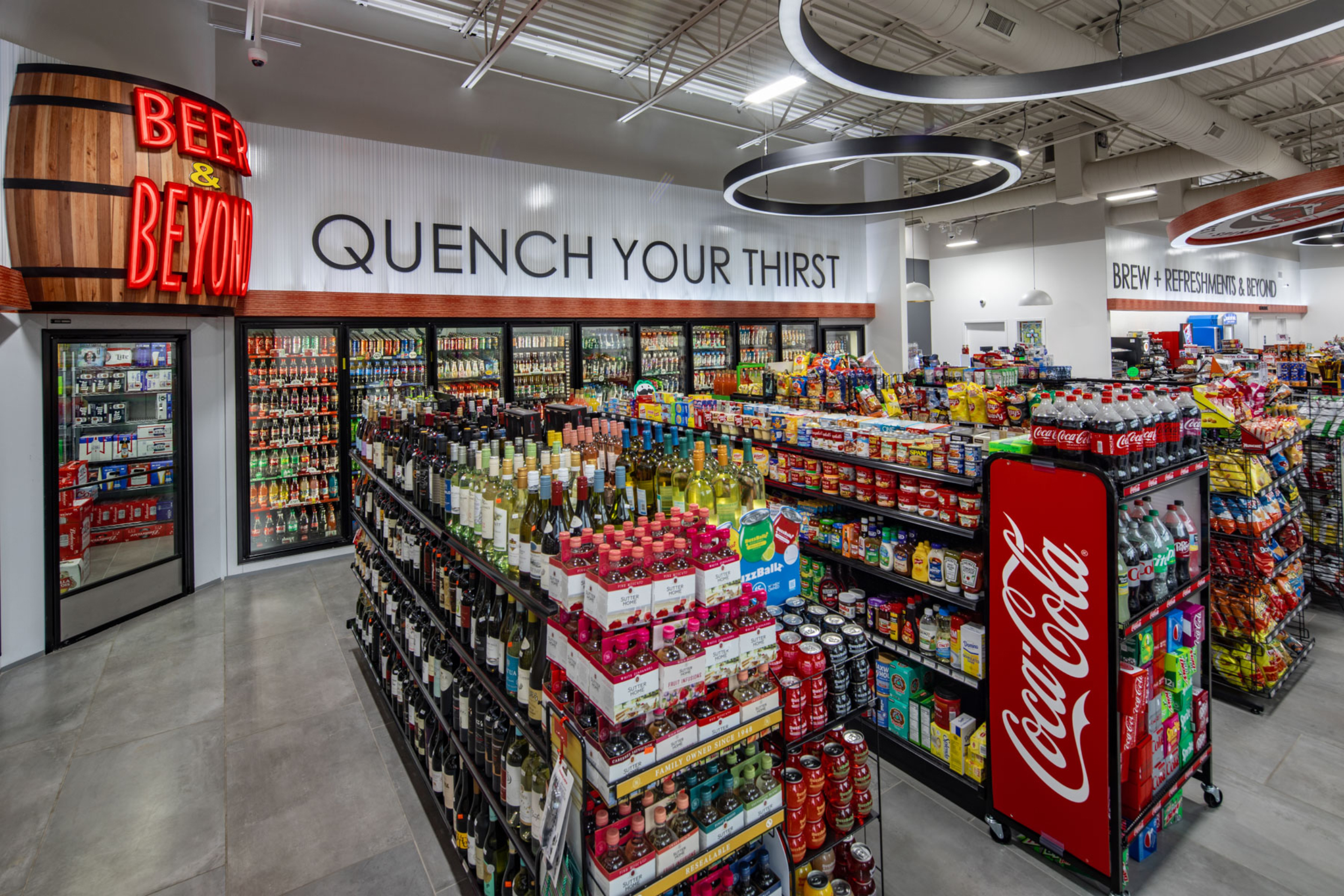 GET WELL LIT: We mean the interior signs, not the customers.
GET WELL LIT: We mean the interior signs, not the customers.
When owners Marah and Farah Karana took over their father’s convenience store and gas station in Commerce Township, MI, the sisters wanted to continue the warm, welcoming environment at the Commerce Market for their customers. As they worked with the FH Studio Design team to elevate the customer experience in the 4,000-sq.-ft. space, lighting became a major discussion for the interior concept design. This included the illuminated CoLite rings in soaring ceilings and soffits and the almost 6-ft.-tall custom-fabricated barrel with illuminated signage above the coolers, which draws customers to the back of the store.
“We typically assess the lighting by utilizing a qualified lighting designer that we contract,” says Benincasa, who led the team. “Our lighting designer will typically source and place the lighting and any lamp information (spots/floods, etc.) to achieve our desired outcome. Our preferred kelvin range is 4000K to 4500K. In this case, Commerce Market ambient lighting was specified by the architect of record, so we addressed the ‘retail’ lighting needs by layering general, task and accent lighting, specifically as it relates to the retail merchandising.”
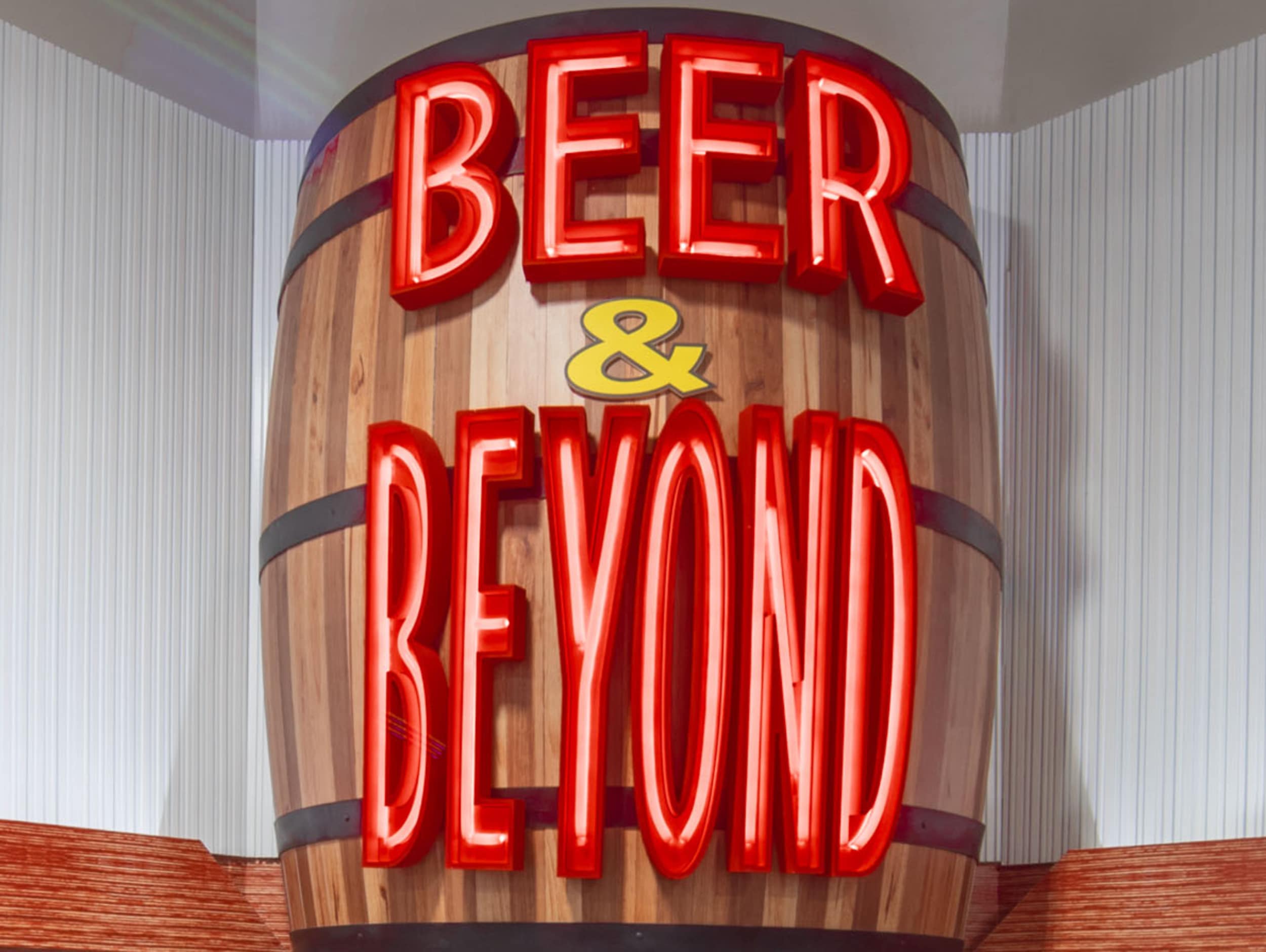 OVER A BARREL: Site visits with lighting specialists facilitate finding the right light levels in stores.
OVER A BARREL: Site visits with lighting specialists facilitate finding the right light levels in stores.
For this project, which took a couple of months, FH Studio used Intense Lighting for the LED ambient; Principal Sloan for the accent lighting LED and faux neon; and Flynix for the decorative.
“From a retail standpoint, we like to layer the lighting, specifically creating merchandising stores that pop,” Benincasa says. “This allows us to draw attention to focal features and end caps to further enhance product displays and maximize the visual merchandising impact for the customer.”
All of the lighting components for this project were manufactured by Federal Heath at its headquarters in Texas, where its team makes adjustments to a customer’s specific lighting needs, placement, temperature, brightness and hotspots. These tweaks are easily performed in the shop but additional adjustments can be done in the field if necessary.
Advertisement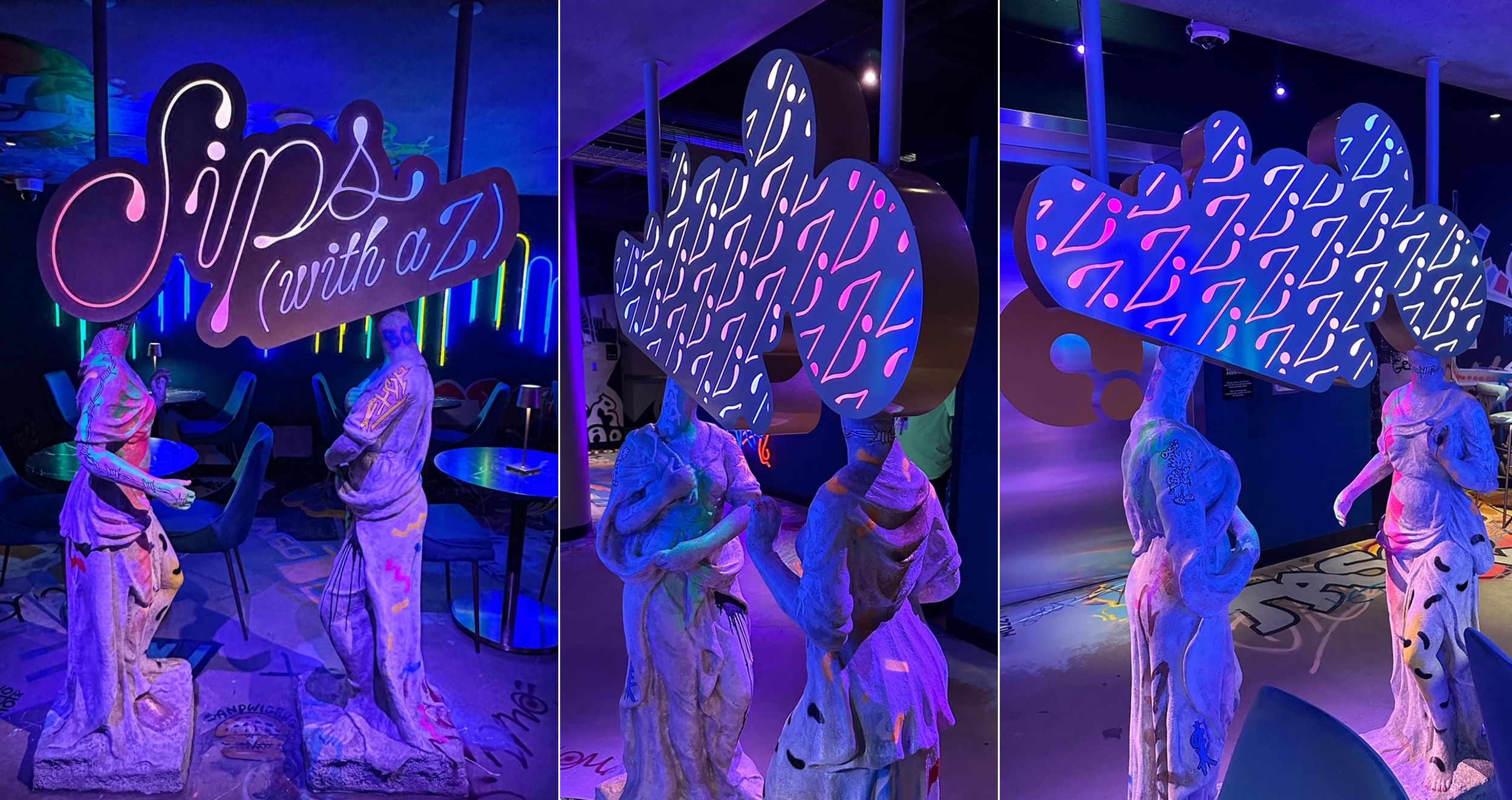 PURPLE GAZE: Low-lighting conditions present their own unique challenges to interior settings , such as bars.
PURPLE GAZE: Low-lighting conditions present their own unique challenges to interior settings , such as bars.
DARK COCKTAIL BARS
Unlike a convenience store, the interior at a bar or restaurant with a lower-light setting can offer its own tricky lighting problems. This past summer, Sips (with a Z), a new cocktail bar owned by Meow Wolf, made its debut at Denver’s Convergence Station, a surreal immersive art installation of interactive rooms, bizarre sculptures and a story arc that was created by Meow Wolf’s team of artists. Greeting guests as they exit the elevator is a brightly lit LED sign constructed by RiNo Sign Works (Lakewood, CO).
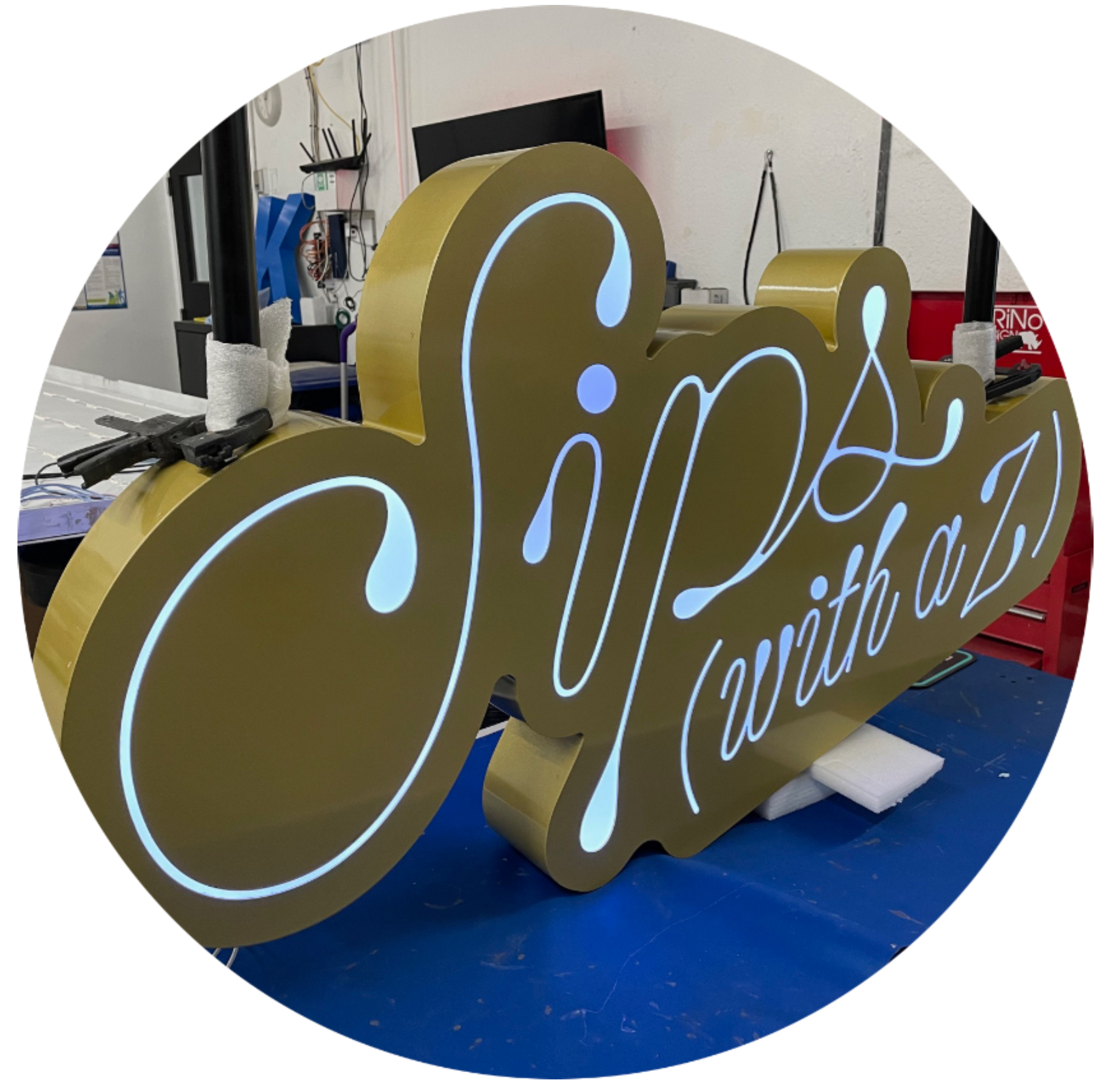 VIEW FINDER: The lighting from this sign was tested from every angle.
VIEW FINDER: The lighting from this sign was tested from every angle.
“When we agreed to take on the project, the client requested that we use color-changing LED lights that can be adjusted with a DMX controller,” says Willis Wood Jr., partner at RiNo. “Using a DMX controller certainly helps when the end-product goal is color customization.”
In fact, all signage in Meow Wolf Denver has been thoughtfully crafted so that the LEDs can be adjusted and programmed from one master room via DMX controllers. This allows management to easily control the look and mood of each sign remotely. RiNo’s sign was no different and fit right in with the rest of the family.
One consideration the design team had to keep in mind was that the cabinet was double-sided. The team had to ensure enough diodes would be used in the right areas to avoid hotspots and illuminate both faces properly.
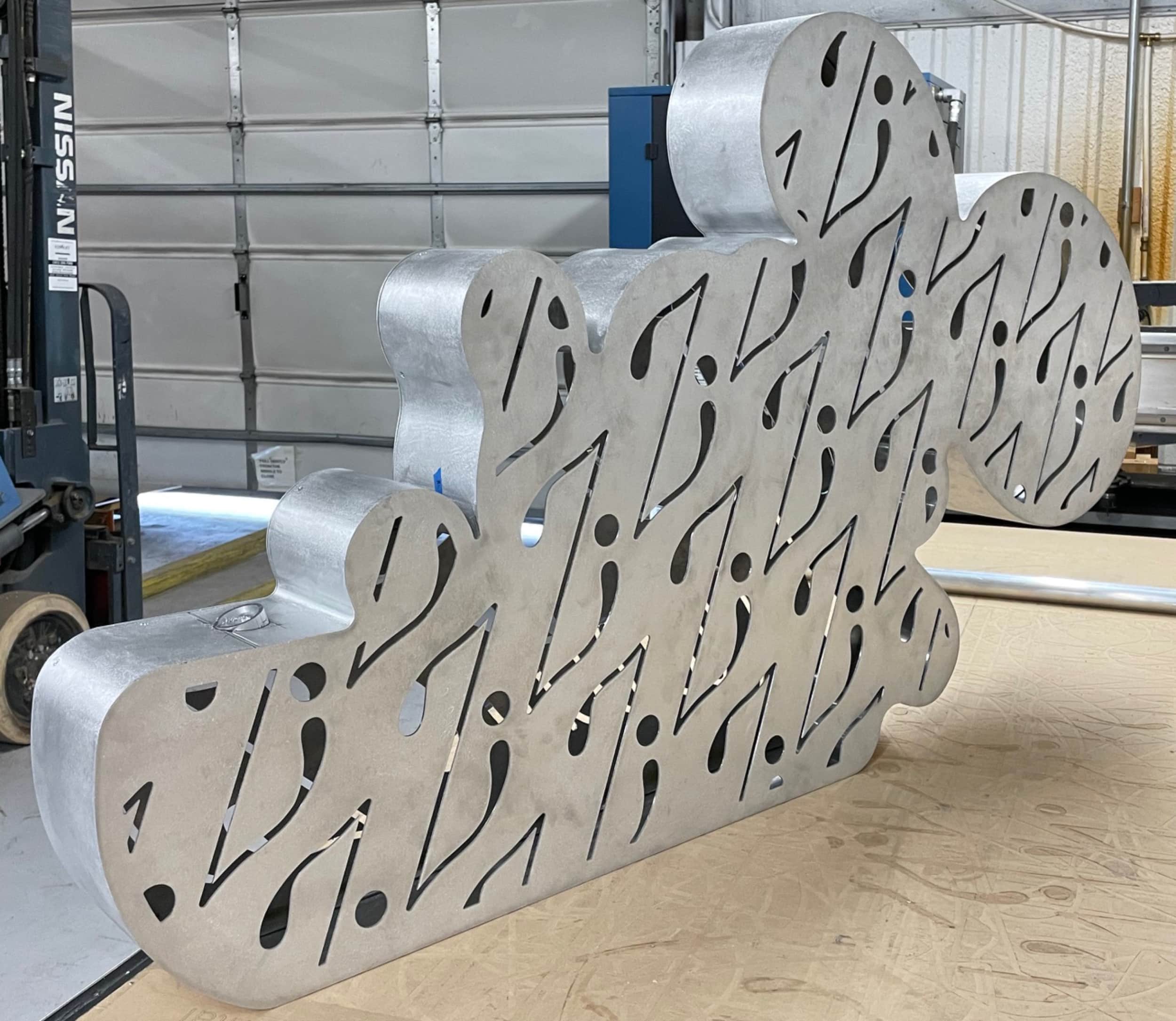
“The client already had an established brand they wanted us to use for the DMX controller and the LEDs,” Wood recalls. “It had to match the existing system in order for everything to work properly and seamlessly.”
RiNo used DMXking LeDMX and Trico 2 RGBW LEDs for the Sips (with a Z) project.
Due to the unique nature of the Sips (with a Z) sign, the original lighting design was a helpful starting guide but as it was fabricated, certain modifications were made to layout/placement and quantity/density of the original design. The light design on paper cannot always anticipate every fabrication detail that may affect the lighting. The lighting design and testing process continued through RiNo’s fabrication stage where their team ensured that modules would have a clear path through the sign and that it would illuminate evenly without obstructions.
Before installation, RiNo’s team tested the client’s lighting in the shop and determined its success by checking if the sign displayed bright and even illumination (no hotspots/shadows) from all angles, at a variety of distances and under the ambient lighting conditions in which it may be viewed. For the Sips (with a Z) sign, RiNo’s team staged the test to mimic the height and angle it would be installed at and tested it with all lights on, all lights off and a dimmed halfway point between the two extremes. This sign was tested with all possible viewing experiences in mind.
During installation, RiNo’s team had to ensure the signs were hung at a specific height, so the sculptures under the sign fit perfectly into the space.
Since it opened, Sips (with a Z) has received five-star reviews, not only for its cocktails, but its imaginative décor and LED signage.
Advertisement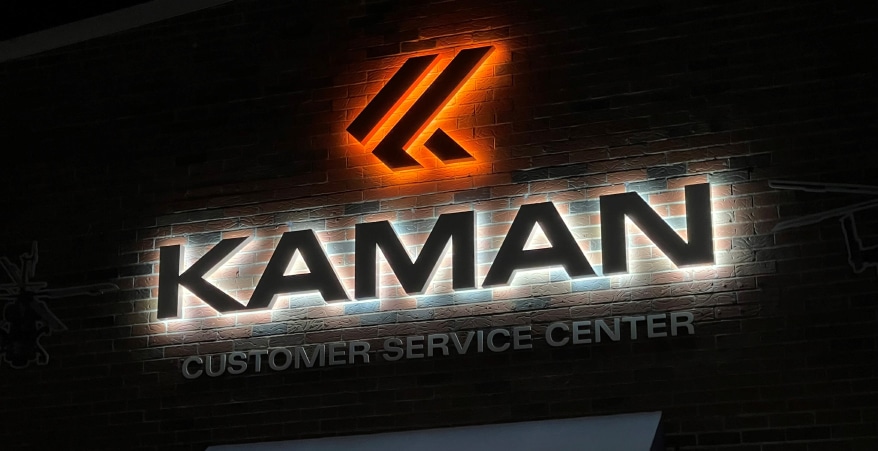
Exteriors: A Touch of Color in the Glow By Lawrin Rosen, ARTfx, Bloomfield, CT
When possible, we often introduce a second color as an accent to a set of halo letters. I believe that the accent adds interest and flare to this style of illumination. Pure white halos are tasteful in their simplicity, but they’ve become commonplace over the years I’ve spent in the sign business. With that said, I am going to share the following guidelines when lighting halo letters.
- Back halo letters with frosted clear polycarbonate of acrylic. The frost can be achieved by sanding the substrate (preferably on both sides) with 320 grit sandpaper. This simple step will facilitate an even diffusion of light.
- Always aim your LED light sources into the letter, thereby creating the halo with reflected rather than direct light. This practice will also assist with light diffusion. By contrast, LEDs aimed outward often create hotspots or lighting polkadots.
- Paint the insides of your halo-style letters a neutral white for added reflectivity. You can use white primer to save on costs. A finish coat isn’t required.
- While much of the trade still uses 6500K white, we have moved over to 5000K for the simple reason that it falls in the mid-spectrum of available white. Therefore, the halo glows we attain appear as pure white untainted by blue overtones.
- Use a high-quality LED. We’ve bought LEDs overseas for as little as 45 cents a foot. Trust me: the skimping will eventually bite you in the hind side. You’re going to pay the price one way or another … and you don’t want to pay with your pride, a pissed-off customer or perpetual service work.
For the Kaman project shown here, we sold the client on an orange light accent for the ‘K’ insignia. It made sense because their corporate style guide calls for an orange insignia when used in print, signage or online. One of the only disadvantages to halo-lit channel letters is that the colors of the letter “cans” can’t be discerned at night. They appear black or dark gray.
I’ll let go of one “trick of the trade“ for readers to note: Because orange LEDs have limited potency — the same applies to most color LEDs besides red — we painted the inside of the three insignia cans bright orange and flooded 2700K white LEDs into them. 2700 is a warm white bordering on amber. The combination proved to be dynamic. Ultimately, the client was pleased with our decision to introduce orange into the glowing mix.
PHOTO GALLERY (17 IMAGES)
📷 FH Studio Design Group | RiNo Sign Works | ARTfx
Advertisement
Debora Toth is a freelance writer who has covered the graphic arts industry for more than 20 years. She is headquartered in Farmingdale, NY. Contact Debora at debora.toth@gmail.com.

SPONSORED VIDEO
Introducing the Sign Industry Podcast
The Sign Industry Podcast is a platform for every sign person out there — from the old-timers who bent neon and hand-lettered boats to those venturing into new technologies — we want to get their stories out for everyone to hear. Come join us and listen to stories, learn tricks or techniques, and get insights of what’s to come. We are the world’s second oldest profession. The folks who started the world’s oldest profession needed a sign.
You may like

NUtec Digital Ink Invests in Solar Energy for Facility

5 Reasons to Sell a Sign Company Plus 6 Options

21 Larry Albright Plasma Globes, Crackle Tubes and More
Subscribe

Bulletins
Get the most important news and business ideas from Signs of the Times magazine's news bulletin.
Most Popular
-

 Tip Sheet2 weeks ago
Tip Sheet2 weeks agoAlways Brand Yourself and Wear Fewer Hats — Two of April’s Sign Tips
-

 Photo Gallery4 days ago
Photo Gallery4 days ago30 Snapshots of the 2024 ISA Sign Expo
-

 Ask Signs of the Times6 days ago
Ask Signs of the Times6 days agoWhy Are Signs from Canva so Overloaded and Similar?
-

 Real Deal2 weeks ago
Real Deal2 weeks agoA Woman Sign Company Owner Confronts a Sexist Wholesaler
-

 Paula Fargo1 day ago
Paula Fargo1 day ago5 Reasons to Sell a Sign Company Plus 6 Options
-

 Benchmarks1 week ago
Benchmarks1 week ago6 Sports Venue Signs Deserving a Standing Ovation
-

 Photo Gallery1 day ago
Photo Gallery1 day ago21 Larry Albright Plasma Globes, Crackle Tubes and More
-

 Women in Signs2 weeks ago
Women in Signs2 weeks ago2024 Women in Signs: Megan Bradley
